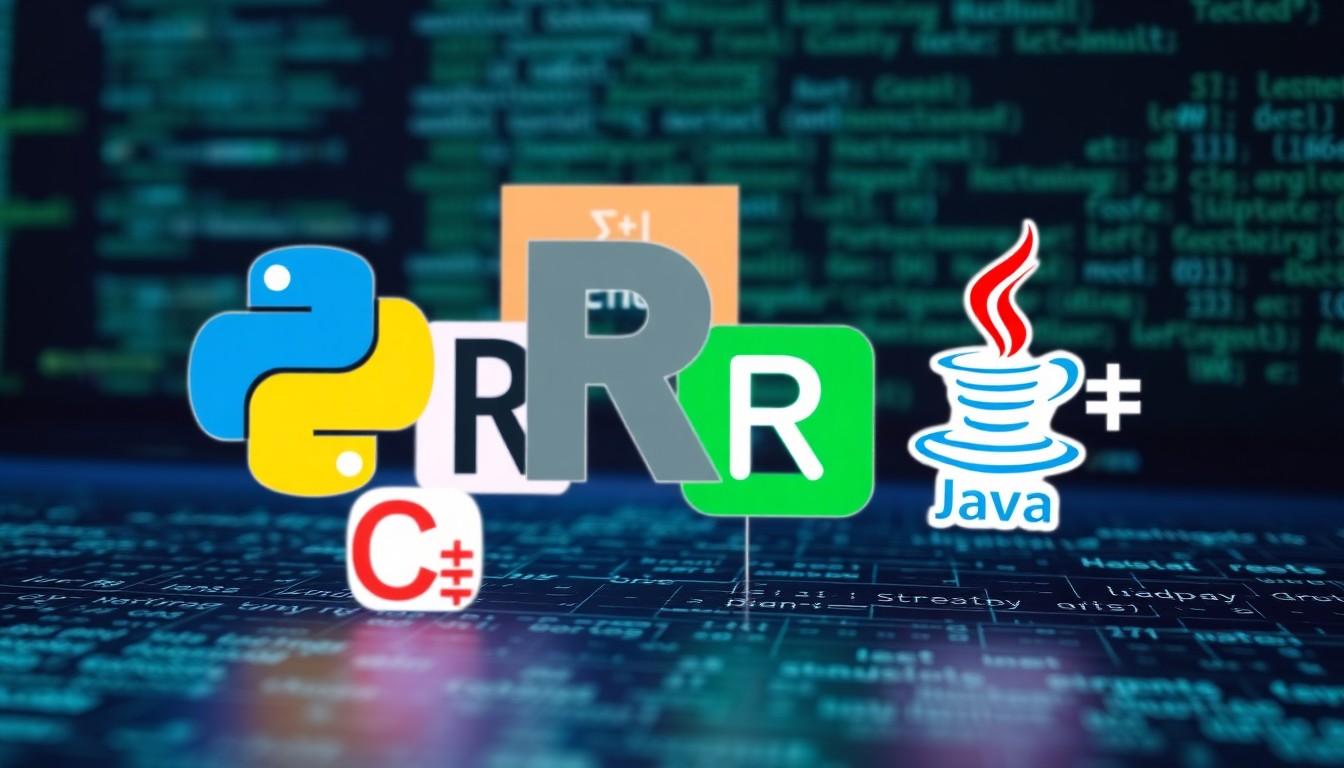Table of Contents
ToggleIn a world where computers are learning faster than your average cat video goes viral, machine learning language is the secret sauce behind this tech revolution. It’s the magic wand that turns data into insights and algorithms into conversation. Ever wondered how Netflix knows just what to recommend next? Spoiler alert: it’s not magic; it’s machine learning speaking your language.
Overview Of Machine Learning Language
Machine learning language encompasses the programming languages and frameworks that facilitate machine learning model development. This branch of technology plays a crucial role in how algorithms analyze data and generate insights.
Definition And Importance
Machine learning language refers to programming languages specifically designed for building machine learning applications. Python, R, and Java serve as prominent examples. These languages have gained popularity due to their simplicity and extensive libraries, such as TensorFlow and scikit-learn. Importance lies in their ability to simplify complex tasks, making it easier for developers to create algorithms that interpret data and learn from patterns. As technology evolves, mastering these languages supports innovation across industries like healthcare, finance, and entertainment.
Key Features
Key features of machine learning languages include flexibility, extensive libraries, and community support. Flexibility allows developers to implement various algorithms depending on project needs. Extensive libraries, such as Keras and PyTorch, provide pre-built functions, accelerating the model creation process. Community support plays a vital role, as users access resources, forums, and documentation to troubleshoot and learn. These features combine to enhance productivity and efficiency, enabling faster deployment of machine learning solutions.
Types Of Machine Learning Languages


Machine learning languages can be categorized into two main types: scripting languages and compiled languages. Each type plays a significant role in the development and implementation of machine learning models.
Scripting Languages
Scripting languages are often utilized for machine learning due to their ease of use and flexibility. Python stands out as a leading example in this category, offering a rich ecosystem of libraries like TensorFlow and scikit-learn. Developers benefit from its simple syntax, which accelerates the process of writing and testing algorithms. Additionally, R is another popular scripting language, particularly favored for statistical analysis and data visualization. Its specialized packages enhance data manipulation capabilities, making it ideal for researchers and data scientists. These languages allow for quick prototyping, making them a go-to option for iterative development in machine learning.
Compiled Languages
Compiled languages, such as Java and C++, provide high performance and efficiency, which are essential for resource-intensive machine learning tasks. Java is widely recognized for its scalability, facilitating the deployment of large-scale applications. Its compatibility with distributed computing frameworks, such as Apache Hadoop, enhances its appeal for big data projects. C++ also showcases speed advantages, making it suitable for application scenarios where performance is critical. While they require more complex syntax, compiled languages offer robustness and control over system resources. Consequently, these languages are favored in production environments where performance and efficiency are paramount.
Popular Machine Learning Languages
Numerous programming languages cater to machine learning needs. Each language offers distinct advantages, addressing various challenges in model development and data analysis.
Python
Python stands out as the most popular machine learning language. Its simplicity and readability enable developers to quickly implement algorithms. A vast selection of libraries, such as TensorFlow and scikit-learn, enhances its functionality. Many data scientists prefer Python for its versatility in handling data manipulation, statistical analysis, and visualization tasks. Extensive community support fosters collaboration and continuous development of tools and frameworks tailored to machine learning.
R
R excels in statistical computing and data visualization, making it a favorite among statisticians and data miners. This language features packages like caret and randomForest, which simplify model training and performance evaluation. Analysts appreciate R’s ability to produce high-quality graphs and reports. Its strong focus on statistical methods makes R especially useful for academic research and exploratory data analysis. A vibrant user community contributes to the ongoing expansion of its capabilities, ensuring it stays relevant in machine learning.
Java
Java plays a crucial role in building large-scale and enterprise-level applications. Known for its speed and efficiency, Java excels in resource-intensive tasks thanks to its compile-time optimizations. Libraries like Weka and Deeplearning4j provide powerful tools for machine learning in production environments. Moreover, Java’s portability allows it to run on different platforms seamlessly. Developers benefit from its scalability, making it ideal for applications that require distributed computing and processing vast amounts of data.
Advantages And Disadvantages
Machine learning languages offer various strengths and face certain limitations.
Strengths Of Machine Learning Languages
Ease of use stands out as a primary strength. Python, for example, features straightforward syntax that appeals to beginners and experts alike. Extensive libraries enhance functionality, enabling developers to implement complex algorithms efficiently. Community support fosters collaboration, ensuring rapid troubleshooting and sharing of resources. Flexibility allows for quick iterations during model development, critical in fast-paced tech environments. Applications span across industries, demonstrating effectiveness in data analysis, predictive modeling, and automation.
Limitations And Challenges
Complexity in advanced tasks often arises when using machine learning languages. While Python and R excel in data analysis, they may struggle with performance in large-scale projects. Scalability poses challenges, particularly when transitioning from prototypes to production-ready applications. Debugging and optimizing algorithms can become time-consuming, impacting overall productivity. Additionally, the steep learning curve for certain libraries may hinder newcomers to the field. Mature languages, like Java, face readability issues, complicating collaboration on diverse teams.
Future Trends In Machine Learning Language
Emerging trends in machine learning languages are shaping the future of technology. Increased integration of artificial intelligence is evident across various platforms. With the growth of deep learning, languages are evolving to better facilitate advanced algorithms.
Natural language processing capabilities are gaining traction, enhancing how machines interpret human language. Python remains at the forefront, driven by its adaptability and strong community support. A shift towards languages that blend ease of use with performance efficiency becomes more apparent, as developers prioritize rapid prototyping.
Growth in automated machine learning tools simplifies the model development process. Frameworks designed for seamless deployment are on the rise, making it easier for data scientists to transition from experimentation to production. As companies seek to optimize operations, languages that support cloud computing and big data frameworks gain popularity.
Applications in real-time analytics demand high-performance languages. Increased focus on scalability leads to an interest in languages like Java and C++ lessening barriers. Collaboration between data scientists and software developers is more crucial, pushing for languages that enhance team productivity.
The demand for interpretability in machine learning models is prompting new advancements in programming languages. These enhancements facilitate in-depth analysis while ensuring transparency in decision-making processes. Meanwhile, languages that cater to domain-specific needs are expected to emerge, addressing particular industry challenges effectively.
Ethics in AI is another growing concern influencing language development. Robust frameworks are increasingly needed to ensure responsible use of AI technologies. Innovations in machine learning languages will likely prioritize these ethical considerations, helping developers navigate complex data environments responsibly.
Machine learning languages are pivotal in shaping the future of technology. Their ability to transform data into actionable insights is revolutionizing industries. As Python continues to dominate with its user-friendly approach and extensive libraries, languages like Java and C++ are gaining traction for their performance and scalability.
The evolving landscape of machine learning emphasizes the importance of collaboration between data scientists and developers. This synergy will drive innovations that prioritize efficiency and ethical considerations. As machine learning continues to advance, the languages that support it will also evolve, ensuring they meet the growing demands of real-time analytics and responsible AI use. The future holds exciting possibilities for those who harness the power of these languages.







